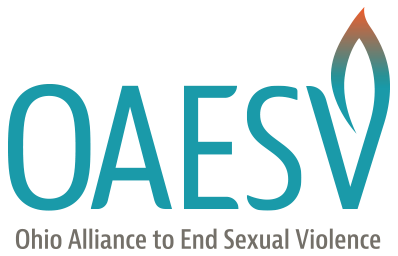
U.S National Plan to End Gender-Based Violence: What This Means for Ohio
In late May, the White House published the first-ever National Plan to End Gender-Based Violence, a comprehensive resource for federal approaches to violence prevention and response. This federal plan follows decades of national plans developed in other countries and is a key step in prioritizing violence prevention and response. The plan is broken down into seven strategic pillars:
- Prevention
- Support, healing, safety, and well-being
- Economic security and housing stability
- Online safety
- Legal and justice systems
- Emergency preparedness and crisis response
- Research and data
It’s encouraging to see prevention as the first strategic priority, as historically, prevention has received less funding, research, and capacity support. And while prevention has its own section in the plan, economic security, housing stability, and emergency preparedness are also effective prevention tools.
This plan specifically highlights priorities on the federal level, meaning it could affect federal funding streams, research priorities, and governmental agency expectations. What does the federal response to gender-based violence mean for Ohio, though? Let’s look at some possibilities.
Goal 1: Enhance and Promote GBV Prevention
The first goal of the prevention strategy is to invest in evidence-informed and evidence-based strategies and their evaluation. Research on experiences of violence in historically understudied populations – particularly trans, bisexual, immigrant, and refugee communities, and varying racial and cultural identities – would support Ohio’s rape crisis programs in making the most informed programming choices. If the data collected can then be separated by location, it could point to the highest-need populations in program areas. The plan calls for the prioritization of participatory research and qualitative research methods, while acknowledging historical harm caused to the same understudied and marginalized populations. Federal resources developed or distributed on these topics would be valuable technical assistance for Ohio’s programs. Lastly, this first goal points to an immediately applicable strategy of expanding the Centers for Disease Control and Prevention (CDC)’s website, which is a rich source of information for Ohio’s prevention practitioners.
Goal 2: Enhance Dissemination and Implementation of GBV Prevention Strategies
A strong source of information on what works to prevent forms of violence, including sexual violence, are the CDC’s Technical Packages for Prevention. Goal 2 outlines steps to ensure widespread adoption of these resource documents and continue to update strategies based on any emerging evidence. Processes to widely disseminate these strategies will significantly improve prevention in Ohio. According to a 2021 capacity assessment of Ohio’s prevention programs, a key barrier to prevention in Ohio for programs not funded through Rape Prevention Education grants is accessing these technical packages. If more of Ohio’s rape crisis programs can access this information, the stronger chance we have of reducing violence in Ohio.
Goal 3: Change Social Norms and Promote Healthy Relationships
The third goal is focused on highlighting strategies for building knowledge in young people and is, frankly, the least exciting goal in this pillar. This goal highlights the need for training programs in “consent, boundaries, de-escalation, and active bystander intervention.” This goal reads as a broad overview of generic prevention programming and leaves more questions than answers. While education and training are key parts of prevention, they are also time-consuming and have the least impact on the big changes needed for violence prevention. Are these strategies for federal programs to do training, or is it highlighting what most local programs are offering? If these strategies and programming can translate to funding for schools; community programs dedicated to de-escalation and community building; or evaluation of more programs, then the benefits of these strategies will be clearer.
Goal 4: Improve Comprehensive Health Approaches to Prevent GBV
The last goal in this prevention pillar is focused on the healthcare system. This strategy is not focused on primary prevention but is instead focused on providing quality care and screening for survivors who interact with the healthcare system. There are some promising strategies with clear applicability to federal programs, such as using the Affordable Care Act to cover screening for partner violence during preventative annual exams. Strategies, such as providing supportive workplace policies at the federal level, would provide templates for workplaces in Ohio. Lastly, supporting comprehensive support for those who have caused harm and incentivizing healthcare systems to address the holistic needs of patients would create much-needed support for similar efforts at the state level.
A Promising Start
Preventing sexual violence is a shared responsibility that requires multi-sectoral and evidence-informed approaches. This federal-level plan is a promising start in creating the necessary structures, funding streams, and research needed for that approach. Ohio has much to gain from these priorities and will ideally have leverage in adopting these strategies in our work due to this plan. While we might not see the effects immediately, we can begin to take the small steps needed for longer-term change – as with prevention as a whole.
“The State of Prevention” is a blog series that explores Ohio’s prevention landscape, highlighting both history and current events that impact the field.
